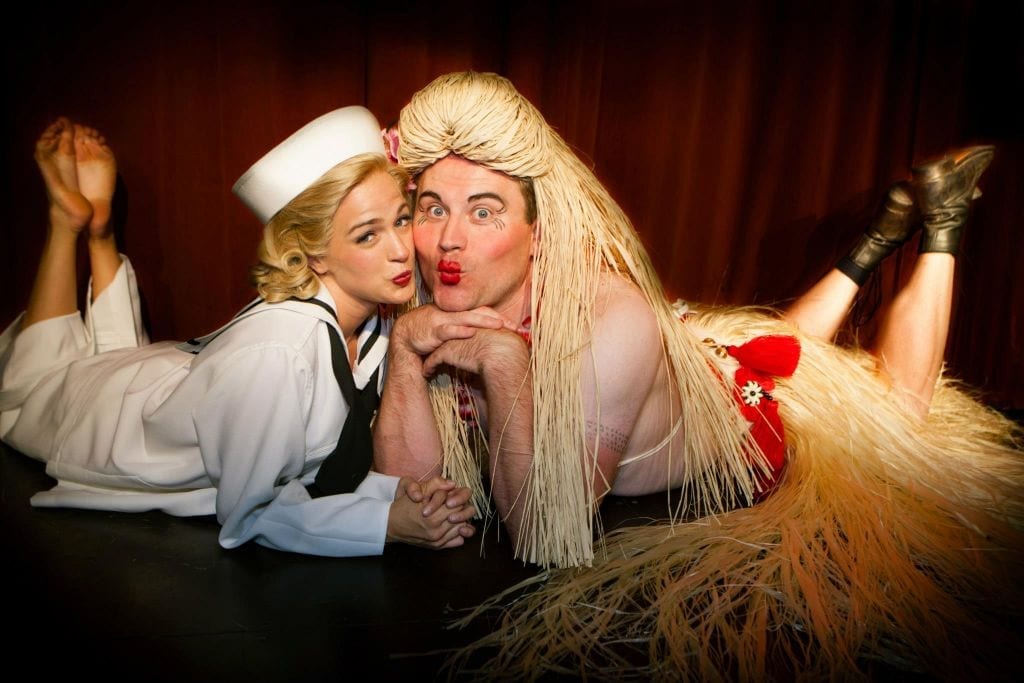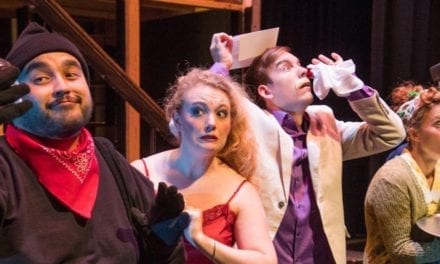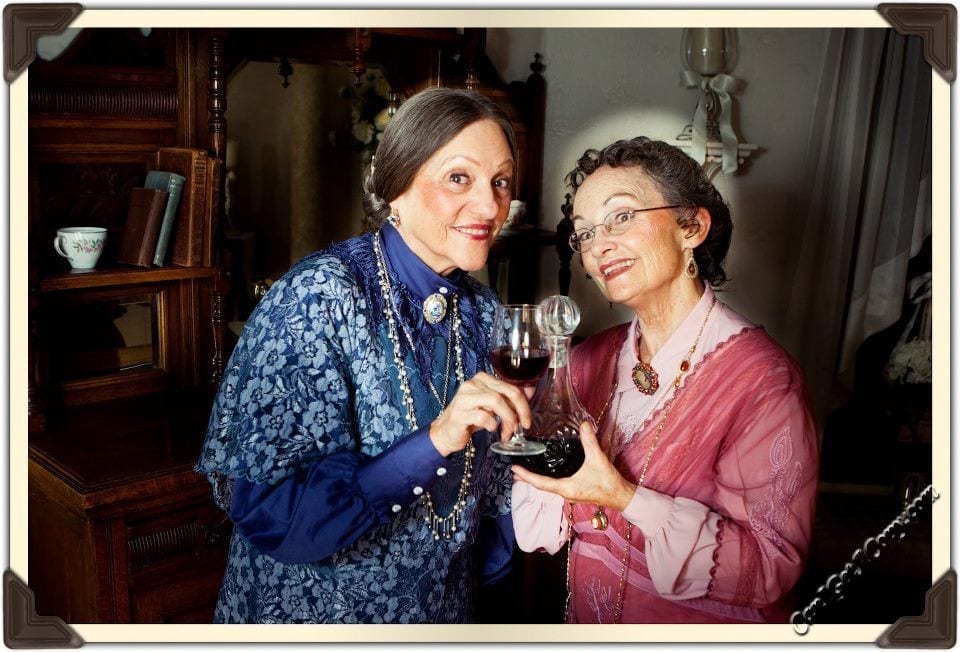OREM — Rodgers and Hammerstein’s musicals are beloved all over the United States, but I believe they are also widely misunderstood. I know people who think that The Sound of Music, for example, is merely about a bunch of kids who learn to love singing. But it’s actually a musical about the importance of standing up for what you believe in, no matter what it may cost. Other people believe that Oklahoma! is merely about a girl deciding who she’s going to go to a dance with. That show is actually about the importance of moral cleanliness and following your heart.

Show closes November 24, 2012.
As is apparent, Rodgers and Hammerstein were never shy about teaching a lesson as they entertained their audiences, and South Pacific is no different. On the surface the play is about the turmoils of falling in love during a war. But without much digging an audience can see in Oscar Hammerstein and Joshua Logan‘s script a moving message of tolerance and cultural understanding that was bold and daring in 1949, but still resonates today.
Like many Hale Center Theater productions, the performances in South Pacific may be the best you’ll find in Utah County right now. In “I’m Gonna Wash That Man Right Outa My Hair” Brittney Worley-Sanders showed that she knows how to carry a musical number and own the stage during a performance. During the song Worley-Sanders was so sassy and eye catching as Ensign Nellie Forbush that the other performers on the stage seemed to fade away. Similarly, in “I’m in Love With a Wonderful Guy,” Worley-Sanders sparkled under the theatrical lights and enthusiastically conveyed a giddy schoolgirl charm that made the lyrics and message of the song (and her character’s emotional state) ring true. Opposite Worley-Sanders was Dallyn Vail Bayles, whose rich masculine voice seems perfectly tailored for songs he sings as Emile de Becque in the lush score. (Giving Bayles a microphone for his songs was merely a formality; he clearly has the ability to fill the entire theater with just his natural voice.) Bayles’s endearing French accent and dignified bearing set him apart from the boisterous Americans and the placid Polynesian characters. Given his acting choices, Bayles made it natural that de Becque would serve as a bridge between the two cultures on the island.

Dallyn Vail Bayles as Emile de Becque and Kelly Hennessey as Ensign Nellie Forbush. Photo by Pete Widtfeldt (CanIGetACopy.com).
I also appreciated the performances by the actors in some of the secondary roles. Ben Henderson played Luther Billis as a guy who was always looking for the next way to earn a quick buck, but who didn’t seem greedy or materialistic—just a dedicated American capitalist. Elisa Eklof Smith was a sweet and endearing Bloody Mary whose maternal instincts were doing their best to help her adapt to rapidly changing times on her island. I especially enjoyed Smith’s performance of the toe tapping “Happy Talk,” which added a great deal emotion and tenderness to the second act.
Notwithstanding these excellent performances, I felt they came up short. Each of the mentioned actors—indeed, most of the cast of South Pacific—performed well. But these performances were in isolation of other actors’ performances. I never felt like the actors were building relationships among the characters in the play. Even the romantic couples (Nellie and Emile, Lt Cable and Liat) seemed to just be physically with each other; there was rarely an emotional connection being created between them. This made it difficult to believe they were either falling in love (in Cable and Liat’s case) or would try to build a life together under such trying circumstances (for Nellie and Emile). I also had problems with Bloody Mary’s relationship with Lt. Cable; it never seemed clear to me why Mary thought that Cable would be a good son-in-law or why she wanted her daughter to marry him. I believe that some better direction from Marcie Jacobsen would have moved these actors’ performances from “good” to “superb.”
But don’t think that Jacobsen’s directing was a failure. One thing she excels at is creating contrasts between scenes. For example, as the tender, domestic opening scene ends, Jacobsen snaps the audience into a completely different location and social environment by having the men in the next seen give a sudden, rousing rendition of “Bloody Mary.” The effect is powerful and focused my attention on the differing cultures and social rules that governed the various inhabitants of the island. Jacobsen also created excellent contrasts after “I’m in Love With a Wonderful Guy” and the following scene in Captain Brackett’s office and among the scenes that take place at the Thanksgiving party. I also got a kick out of the banter among the characters during scene changes and in their reactions; some of these were hysterically funny, and the comments often helped build character development in the ensemble roles. And Jacobsen’s choices for “Honey Bun” made the song the highlight of the second act.

Rebecca Burroughs as Liat and Greg Hansen as Lt. Joseph Cable. Photo by Peter Widtfeldt (CanIGetACopy.com).
The visual star of this performance is Maryann Hill‘s costume design. The costumes all seemed delightfully authentic, and they clearly conveyed information about rank (for the military personnel), social class, and personal idiosyncrasies of the characters. I also adored the homemade look of the costumes at the Thanksgiving party. I was not as pleased by the scenic design (from Bobby Swenson), though. The backdrop was painted as a generic island. While this is fine (and expected for South Pacific), the characters actually referred to locations they could see on the upstage wall. Because of the intimate space of the Hale, it was clear that these locations were just paintings and that the wall was a few feet from the actors; this made it much harder for me to suspend my disbelief and accept the stage as an island. On the other hand, I liked the set pieces that dropped from the ceiling (such as the map or the lights), and thought that they were slight touches that did much to establish the mood and location of the scenes.
Overall, this production is a delight, and I would recommend that audience members snatch up the few remaining tickets to its performances. It’s not a production that will surprise longtime fans of the show, but it’s faithful to the material. More importantly, in this production the message of the script is so undiluted and moving that few audience members will have a shallow understanding of the plot after seeing the show.

Kelly Hennessey as Ensign Nellie Forbush and Ben Henderson as Luther Billis. Photo by Pete Widtfeldt (CanIGetACopy.com).





